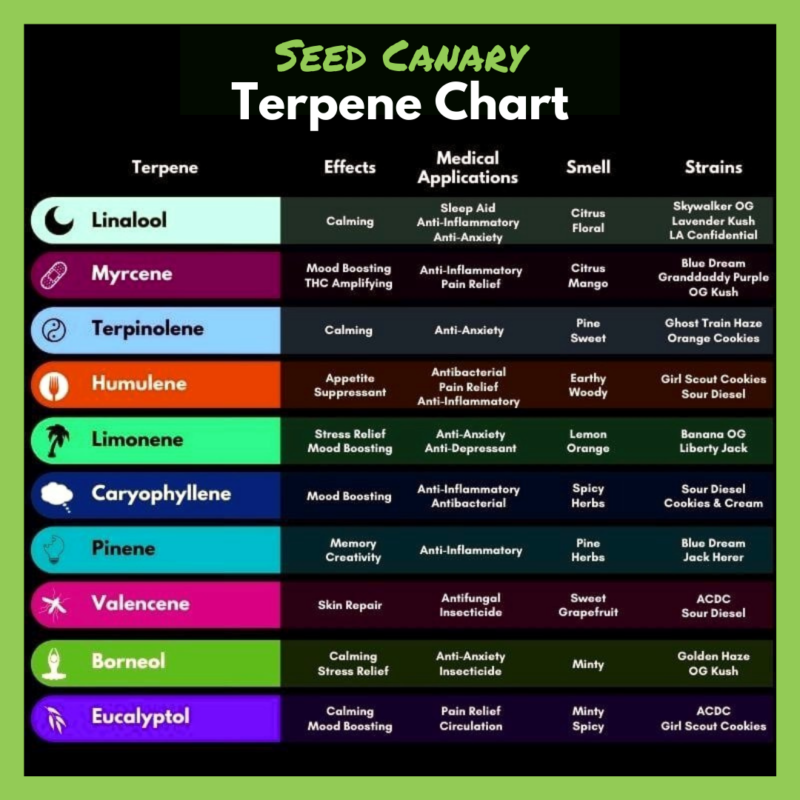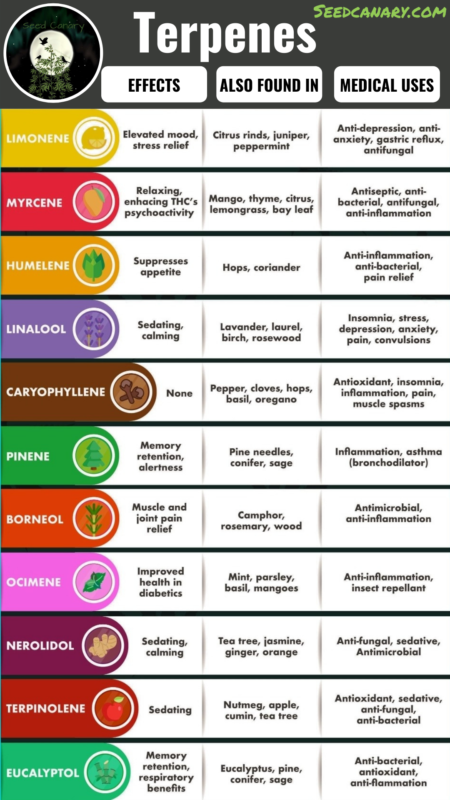Benefits of Cannabis, Cannabis Terpenes, Medical Marijuana
Cannabis Derived Terpenes – Explained
What Are Terpenes?
One of the significant compounds used in essential oils, terpenes, is most commonly derived from plants, including teas, herbs, and, of course, cannabis. Terpenes can also be found in an animal’s egg yolk, fish scales, and feathers.
Cannabis Terpenes created in unique combinations are what give plants their fragrance, taste, and look. A plant’s terpenes are also a way to protect itself from predators or to attract insects such as bees for pollination.
We value terpenes for their therapeutic and medicinal purposes. They are in spices, teas, and essential oils. Two of these spices are Curcumin and Thyme. Curcumin is a spice in common Indian dishes. It boasts a wide range of healing qualities but is best known as an anti-inflammatory. Thyme is another commonly used spice for cooking. Therapeutically it has both antibacterial and antifungal properties.
There are also a wide variety of terpenes found in marijuana. Cannabis derived terpenes are more similar to the well-known compounds of THC and CBD. Like these main chemicals, marijuana terpenes have various therapeutic uses that include analgesic, anti-anxiety, and anti-inflammatory properties.
Where are terpenes found on the cannabis plant?
Terpenes are found in trichomes, and are responsible for terpene production in cannabis. Trichomes contain resin glands that make terpenes and cannabinoids such as tetrahydrocannabinolic acid (THCA) and cannabidiolic acid (CBDA), which turn into tetrahydrocannabinol (THC) and cannabidiol (CBD), respectively, when decarboxylated.
How Cannabis derived terpenes interact with the human body
Cannabis Derived Terpenes do more than just providing flavor and aroma. They also support other cannabis molecules in producing desirable effects. This is called the entourage or ensemble effect, and it’s the reason these aromatic compounds have become such a important area of Cannabis research.
Whether consuming cannabis for personal or medical use, we all go to cannabis for the same thing, the effects. The entourage effect presents a reality in which the right cocktail of cannabis compounds will prove more potent and effective than an isolated compound.
Terpenes and cannabinoids may either boost or suppress one another’s effects, depending on which combination is present in each cultivar and how the consumer responds to it. scientific evidence suggests that terpenes play a considerable role in not only tempering the intoxicating effects of THC, but also creating synergy with phytocannabinoids and can even increase their overall therapeutic value.
A huge factor in the cannabis industry’s current terpene boom is the growing popularity of dabbing — the act of inhaling vaporized cannabis concentrates through a temperature-specific heating method such as a dab rig, e-rig, dab pen, or vaporizer. Dabbing concentrates at high temperatures typically results in a smooth, tasty Marijuana experience. What many dabbers may not be aware of, is the potential possibility of terpenes producing toxic chemicals when heated to high temperatures.




Comments are closed.